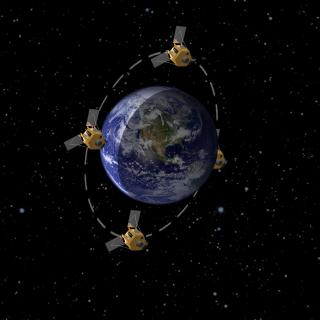It may interest you
-
 During October, the Adaptive Optics System team at the Gran Telescopio Canarias (GTCAO) of the Instituto de Astrofísica de Canarias (IAC), in collaboration with the technical team at the Gran Telescopio Canarias (GTC or Grantecan), successfully completed the integration of the GRANCAIN instrument into the world's largest optical-infrared telescope. The installation was carried out at the GTCAO outlet on the telescope's Nasmyth B platform, a key step in initiating performance testing of the new adaptive optics system. This is the first scientific instrument to operate using the GTC's adaptiveAdvertised on
During October, the Adaptive Optics System team at the Gran Telescopio Canarias (GTCAO) of the Instituto de Astrofísica de Canarias (IAC), in collaboration with the technical team at the Gran Telescopio Canarias (GTC or Grantecan), successfully completed the integration of the GRANCAIN instrument into the world's largest optical-infrared telescope. The installation was carried out at the GTCAO outlet on the telescope's Nasmyth B platform, a key step in initiating performance testing of the new adaptive optics system. This is the first scientific instrument to operate using the GTC's adaptiveAdvertised on -
 El Instituto de Astrofísica de Canarias (IAC), a través de su departamento IACTEC-Espacio, celebra hoy la System Requirements Review (SRR) de la misión IACSAT-1, un hito clave que marca la finalización de la fase B1 del proyecto y consolida todos los requisitos técnicos, científicos y programáticos necesarios para avanzar hacia el diseño preliminar del satélite. IACSAT-1 es la primera misión liderada íntegramente por el IAC dedicada a la observación astronómica desde el espacio. Se trata de un proyecto desarrollado por IACTEC-Espacio, con un equipo científico dirigido por el Prof. RafaelAdvertised on
El Instituto de Astrofísica de Canarias (IAC), a través de su departamento IACTEC-Espacio, celebra hoy la System Requirements Review (SRR) de la misión IACSAT-1, un hito clave que marca la finalización de la fase B1 del proyecto y consolida todos los requisitos técnicos, científicos y programáticos necesarios para avanzar hacia el diseño preliminar del satélite. IACSAT-1 es la primera misión liderada íntegramente por el IAC dedicada a la observación astronómica desde el espacio. Se trata de un proyecto desarrollado por IACTEC-Espacio, con un equipo científico dirigido por el Prof. RafaelAdvertised on -
 The Solar System research group at the Instituto de Astrofísica de Canarias (IAC) is participating in the international programme to keep a closet track of asteroid 2024 YR4. The aim is to determine its orbit with the highest possible precision before it stops being observable by ground based and satellite telescopes in April, and so improving our value of the probability that it will impact the Earth in 2032. In this context several telescopes of the Canary Observatories of the IAC are playing an outstanding role in this observing campaign: The Gran Telescopio Canarias (GTC) at the Roque deAdvertised on
The Solar System research group at the Instituto de Astrofísica de Canarias (IAC) is participating in the international programme to keep a closet track of asteroid 2024 YR4. The aim is to determine its orbit with the highest possible precision before it stops being observable by ground based and satellite telescopes in April, and so improving our value of the probability that it will impact the Earth in 2032. In this context several telescopes of the Canary Observatories of the IAC are playing an outstanding role in this observing campaign: The Gran Telescopio Canarias (GTC) at the Roque deAdvertised on
